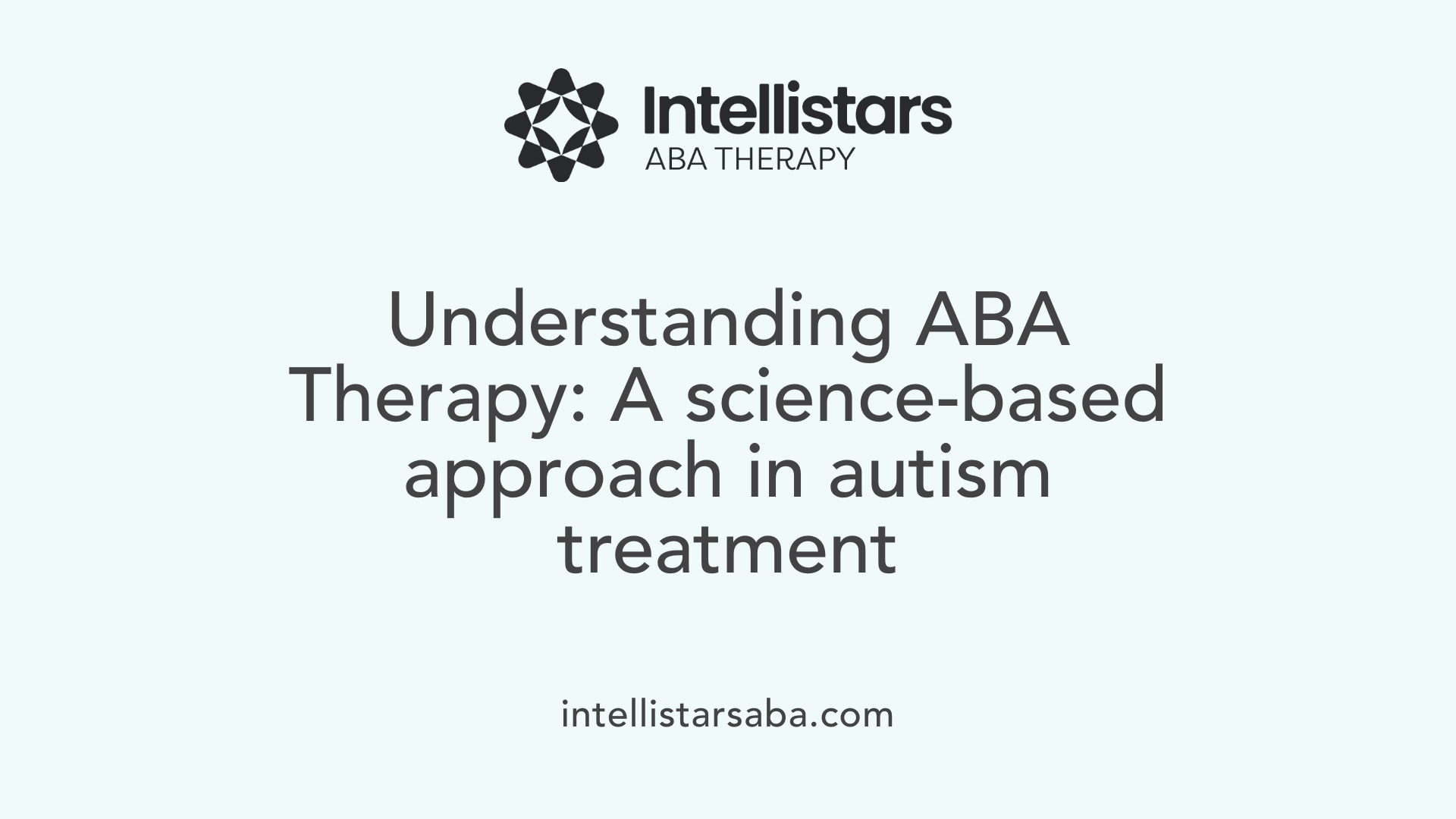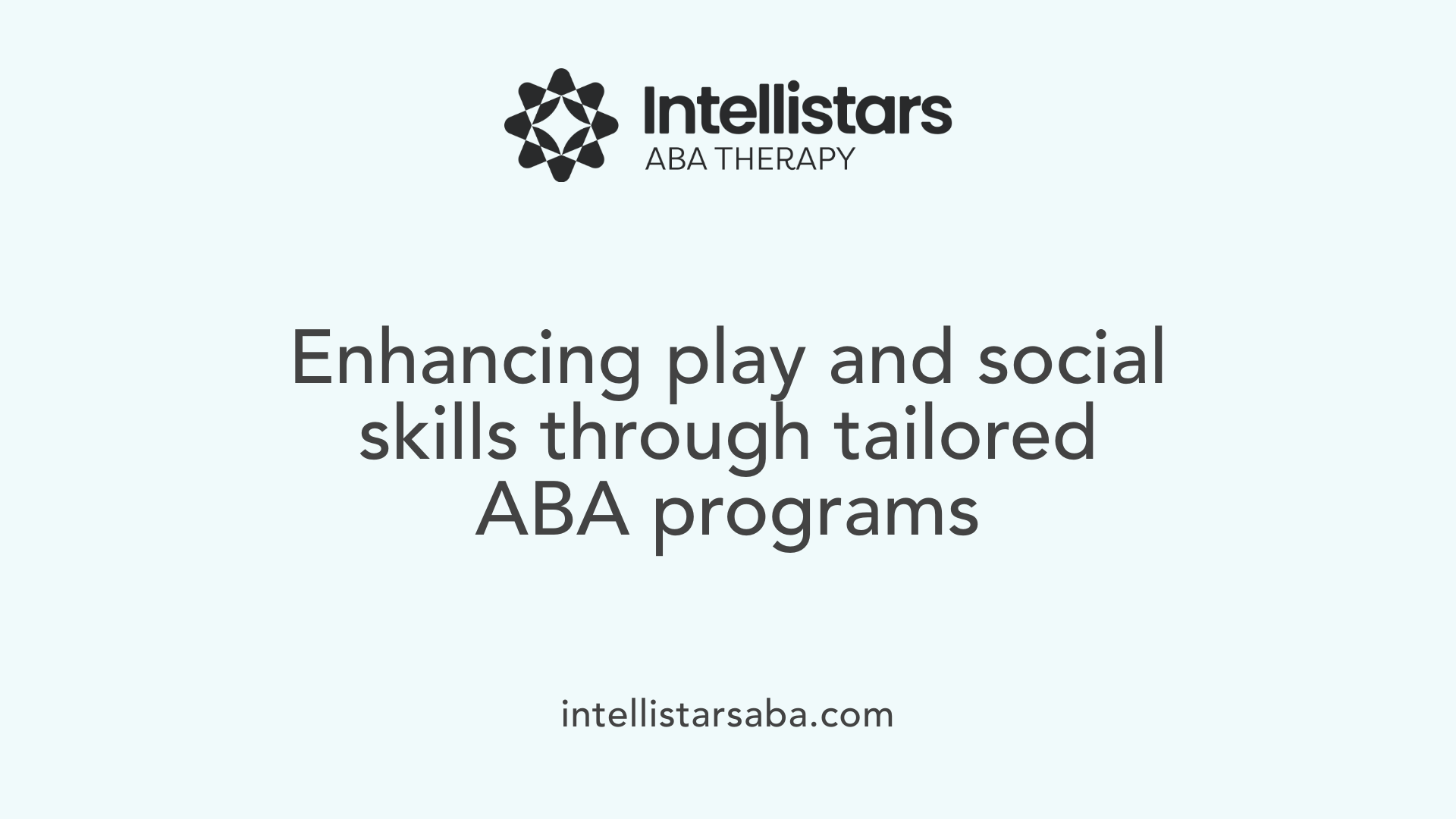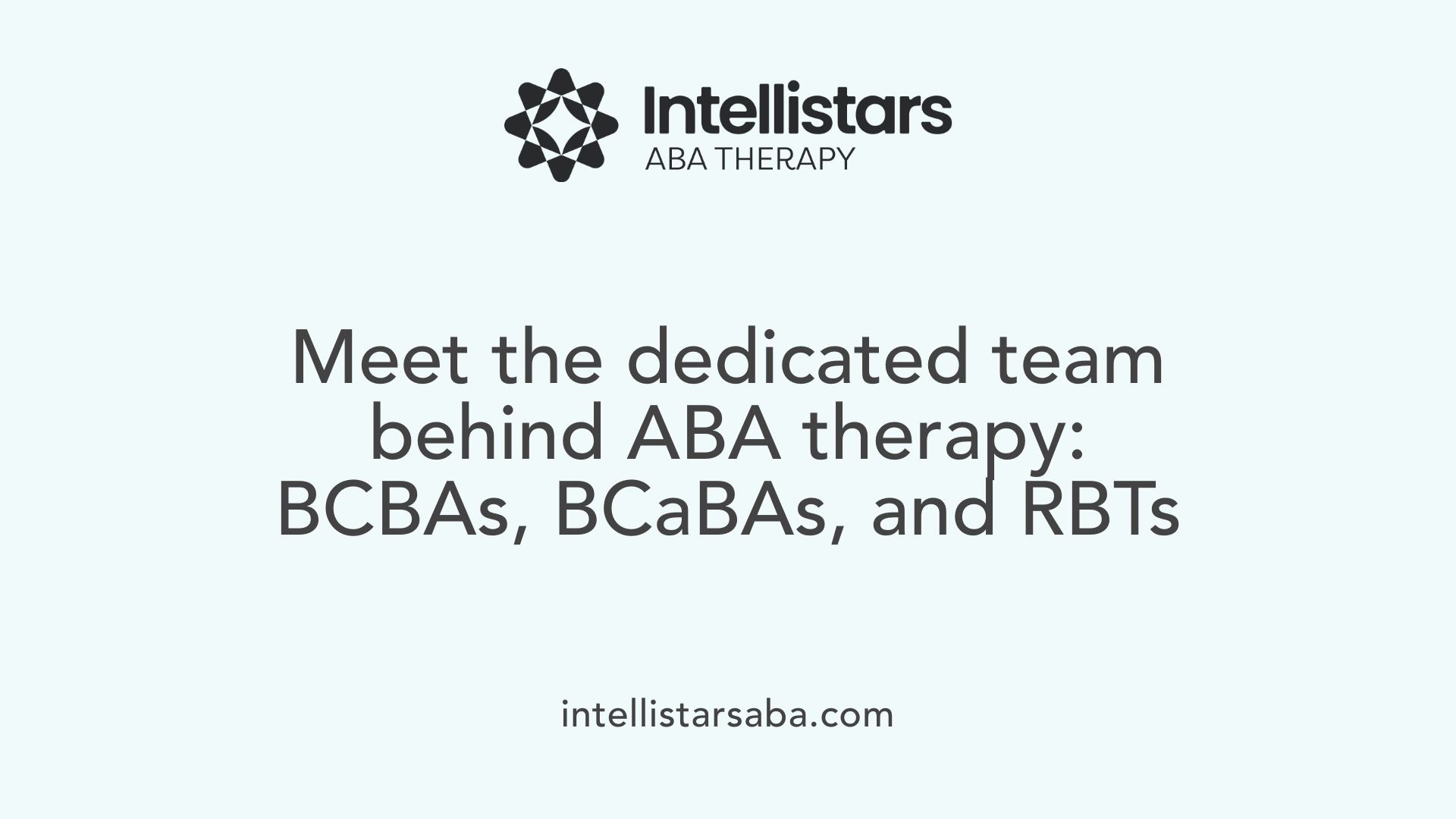Understanding ABA Therapy and Its Foundations for Play Skills Development
Applied Behavior Analysis (ABA) therapy is a scientifically validated approach widely used to support children with autism spectrum disorder (ASD) by fostering essential skills, including play. Recognized for its evidence-based techniques, ABA focuses on how behavior is influenced by the environment and aims to increase positive behaviors while decreasing disruptive ones. This article explores how ABA interventions specifically target the development of play skills, employing individualized strategies that leverage the natural learning environment, positive reinforcement, and systematic behavior analysis.
What is ABA Therapy and Its Role in Autism Treatment?

What is Applied Behavior Analysis (ABA) therapy and how is it used in treating autism?
Applied Behavior Analysis (ABA) therapy is a science-based approach that studies how behavior occurs and is affected by the environment. Primarily used in autism therapy, its goal is to promote positive behaviors — like communication and social skills — while decreasing behaviors that challenge learning or safety.
How does ABA work?
ABA breaks down complex skills into small, manageable steps, teaching each with clear instructions and consistent reinforcement. Positive reinforcement, where desirable behaviors are rewarded with something valued by the individual, is foundational. For example, a child might receive praise or a favorite activity when they use words instead of yelling to express themselves.
The therapy uses the Antecedent-Behavior-Consequence (ABC) model to analyze behavior, helping identify triggers and results to guide effective teaching strategies.
What are the primary goals of ABA therapy in autism?
Goals are varied and individualized, targeting areas such as:
- Communication and language development
- Social interactions
- Self-care and daily living skills
- Play and motor skills
- Academic skills
What techniques are utilized in ABA?
ABA employs multiple evidence-based methods, including:
- Discrete Trial Training (DTT): Structured teaching of single skills
- Natural Environment Teaching (NET): Learning integrated into play and daily activities
- Functional Communication Training (FCT): Teaching appropriate ways to communicate needs
- Shaping and Modeling: Gradually reinforcing closer approximations to target behavior and demonstrating behaviors for imitation
- Extinction and Differential Reinforcement: Strategies to reduce unwanted behaviors
How is ABA individualized and evaluated?
Every ABA program is tailored based on thorough assessments by qualified professionals such as Board Certified Behavior Analysts (BCBAs). Continuous data collection monitors progress, allowing for frequent goal review and therapy adjustments. Settings for therapy can vary — from homes and schools to community environments — and involve either one-on-one or group sessions.
Research underscores that intensive and sustained ABA therapy leads to significant improvements in intellectual functioning, communication, social skills, and daily living abilities for many children with autism.
How ABA Targets Play Skills for Children with Autism

What Role Do Play Skills Have in ABA Therapy?
Play skills are a crucial goal in Applied Behavior Analysis (ABA) therapy for children with autism. Developing these skills helps children engage more fully with peers and adults, enhancing their social interaction, communication, and overall learning.
How Does ABA Increase Play Behaviors?
ABA uses individualized programs tailored by behavior analysts to gradually increase play behaviors. Strategies include creating structured yet engaging scenarios where play opportunities naturally arise, encouraging children to participate and learn through positive experiences.
What Techniques Support Play in ABA?
Positive reinforcement is a primary technique utilized in play to encourage desirable behaviors. When a child successfully engages in play or social interaction, they receive a reward valued by them, increasing the likelihood they will repeat the behavior. Techniques like discrete trial training (DTT) and Natural Environment Teaching (NET) integrate play effectively by breaking down complex play skills into simpler, manageable steps.
How Are Complex Play Skills Taught?
ABA breaks down play skills into manageable parts or steps, making it easier for children to learn. Through shaping and modeling, therapists systematically guide children by reinforcing approximations toward a target play skill and demonstrating behaviors children can imitate.
How Do Social and Communication Skills Fit into Play?
ABA programs incorporate social and communication goals within play sessions. For example, therapists might use Functional Communication Training (FCT) to help children ask for toys instead of exhibiting frustration. Natural Environment Teaching encourages child-led play, promoting social skills, communication, and generalization of learned behaviors to daily life.
This comprehensive approach ensures that play is not only enjoyable but also a vital context for promoting essential developmental skills in children with autism.
Play-Based ABA Therapy and Natural Environment Teaching (NET)
What is play-based ABA therapy?
Play-based ABA therapy combines Applied Behavior Analysis techniques with natural play activities to engage children effectively. Instead of rigid instruction, therapy occurs during enjoyable play moments, making learning more appealing and less stressful.
How does Natural Environment Teaching (NET) fit into play-based ABA?
NET is a critical component of play-based ABA that focuses on teaching skills within natural settings like home or community environments. This approach uses the child's interests and day-to-day activities as opportunities for learning, making education relevant and meaningful.
What principles guide child-led learning in NET?
In NET, therapists observe and follow the child's lead, responding to their spontaneous actions and interests. This child-centered approach encourages natural communication and problem-solving, fostering skills in a context the child chooses.
How does NET promote generalization of skills?
By teaching in real-life situations and during natural play, NET helps children apply learned behaviors across different settings and with various people. This generalization is essential for practical use of new skills beyond therapy sessions.
Can play-based ABA therapy reduce anxiety?
Yes, integrating ABA strategies within play reduces the pressure of formal learning. The enjoyable and familiar context of play lowers stress and resistance, encouraging participation and faster progress in therapy.
Blossom Children’s Center exemplifies this approach by tailoring evidence-based play-integrated therapies individually, ensuring children's comfort and engagement while achieving developmental goals.
Key ABA Techniques to Teach Play Skills
Discrete Trial Training (DTT)
DTT is a structured teaching method used to teach one skill at a time. It involves clear instructions, a child's response, and specific consequences to reinforce the desired behavior. In play skills development, DTT breaks down complex play behaviors into manageable steps, allowing children to learn through repetition and positive reinforcement.
Shaping and Modeling Behaviors
Shaping involves reinforcing successive approximations toward a target behavior, gradually guiding the child to perform the desired play skill. Modeling complements this by demonstrating appropriate play behaviors for the child to imitate. These techniques help children acquire new play abilities by building on natural progression.
Functional Communication Training (FCT)
FCT teaches children more appropriate ways to express their needs during play, which reduces frustration and challenging behaviors. By encouraging communication like asking for a toy or indicating a preference, FCT supports smoother social interactions within play settings.
Augmented and Alternative Communication (AAC) in Play
AAC includes tools such as sign language or communication devices to support children with delayed speech. Integrating AAC in play allows children to engage meaningfully and communicate their intentions, enhancing participation and enjoyment.
Use of ABC Analysis to Understand Behaviors
The A-B-C model (Antecedent, Behavior, Consequence) is used to identify what triggers certain play behaviors and how the environment reinforces them. This understanding guides therapists in modifying behaviors by changing antecedents or consequences, helping children develop more positive play interactions.
The Role of Positive Reinforcement and Extinction in Play Skill Acquisition
What is Positive Reinforcement?
Positive reinforcement is a fundamental strategy in ABA therapy, involving rewarding a behavior with something valued by the individual to increase the likelihood of that behavior occurring again. In the context of play skill acquisition, this means encouraging desired play actions by immediately providing positive feedback, such as praise, toys, or attention.
How is Reinforcement Applied Within Play?
During play-based ABA therapy, therapists integrate reinforcement seamlessly into natural interactions. For example, when a child shares a toy or follows a play instruction, the therapist offers a reward that motivates the child to continue engaging in socially appropriate play. This approach enhances engagement, promotes learning, and supports generalization of play skills across environments.
When is Withholding Reinforcement (Extinction) Used?
Extinction involves deliberately withholding reinforcement for behaviors that are harmful or non-productive. For instance, if a child exhibits disruptive behavior during play that previously resulted in attention, therapists stop reinforcing that behavior to reduce its occurrence. This technique is often combined with reinforcing alternative, positive behaviors to guide the child toward more appropriate interactions.
How Does ABA Encourage Socially Appropriate Play Behaviors?
By using a blend of positive reinforcement and extinction, ABA therapy encourages children to replace challenging behaviors with socially acceptable ones. Functional communication training may be employed so children learn to express needs effectively during play rather than acting out. Therapists model play behaviors, shape approximations, and provide consistent reinforcement for desirable skills.
How is Balance Maintained Between Reinforcement and Behavior Reduction?
Successful play skill acquisition requires balancing reinforcement for positive behaviors with strategies to reduce problematic ones. The ABA program is individualized, ensuring reinforcement approaches suit the child's interests and needs while extinction procedures are applied carefully to avoid frustration. Continuous data collection and BCBA guidance help adjust this balance for optimal progress.
| Strategy | Purpose | Example in Play Therapy |
|---|---|---|
| Positive Reinforcement | Increase desired play behaviors | Praising sharing toys during a play session |
| Extinction | Decrease harmful or non-productive behaviors | Ignoring disruptive yelling during game time |
| Functional Communication | Promote effective expression of needs | Teaching a child to ask for a turn instead of grabbing a toy |
| Modeling | Demonstrate appropriate play skills | Therapist shows how to build a block tower |
These methods together form the foundation for helping children develop meaningful and enjoyable play skills through ABA-based interventions.
Who Provides ABA Therapy and Their Qualifications

Roles of BCBAs, BCaBAs, and RBTs
ABA therapy is delivered by a team of trained professionals with distinct roles. Board Certified Behavior Analysts (BCBAs) are licensed experts who design, oversee, and evaluate ABA programs. Board Certified Assistant Behavior Analysts (BCaBAs) support BCBAs by implementing plans under supervision, while Registered Behavior Technicians (RBTs) provide direct therapy using ABA techniques under BCBA supervision.
Educational and Certification Requirements
BCBAs typically hold a Master's degree in fields like psychology or child development, along with specialized supervised training accredited by the Behavior Analyst Certification Board (BACB). BCaBAs usually have a Bachelor's degree and complete similar training at a slightly less advanced level. RBTs are paraprofessionals who receive focused training and certification to carry out therapy tasks efficiently.
Training in ABA Methods
All ABA providers receive training in evidence-based ABA methods, including the use of positive reinforcement, the A-B-C model (Antecedent, Behavior, Consequence), and other behavior modification techniques. This training ensures interventions are scientifically grounded and tailored to individual needs.
Team-Based Approach with Family Involvement
ABA therapy emphasizes collaboration among the multidisciplinary team, including families. Family members are actively involved in goal setting, therapy sessions, and generalizing skills at home and in the community to maximize treatment effectiveness.
Supervision and Ethical Practice Standards
Continuous supervision by certified BCBAs ensures therapy integrity and adherence to ethical standards set by professional boards. This supervision includes ongoing data analysis, progress reviews, and adapting interventions to meet evolving goals for each individual.
Example Table: ABA Therapy Provider Roles and Training
| Provider Type | Education Level | Role Description | Supervision Requirements |
|---|---|---|---|
| BCBA | Master's degree | Designs and monitors ABA programs, supervises team | Independent licensure after BACB board |
| BCaBA | Bachelor's degree | Implements plans, supports BCBA under supervision | Works under BCBA supervision |
| RBT | High school + training | Delivers direct therapy, collects data | Supervised by BCBA or BCaBA |
This structured professional framework ensures that individuals receiving ABA therapy benefit from skilled, ethical, and personalized care tailored to support their developmental success.
Benefits and Challenges of Using ABA to Teach Play Skills
What are the key benefits and challenges of using ABA therapy for autism?
ABA therapy is widely recognized for its powerful benefits in supporting children with autism. Through play-based ABA techniques, children can experience notable improvements in communication and socialization. Play provides a natural context for learning, allowing skills like language use, turn-taking, and sharing to develop in meaningful, engaging ways.
Research has consistently backed ABA’s effectiveness. Intensive ABA programs—typically lasting 25 to 40 hours per week over several years—have documented gains in intellectual functioning, daily living skills, and social interaction. A significant advantage of ABA is its individualized approach, tailoring goals and techniques to each child's unique needs and interests, which fosters a supportive learning environment.
However, challenges remain. The intensity and time commitment required for ABA therapy can be demanding for families and children alike. Developing an effective plan requires detailed assessment by qualified professionals and ongoing progress monitoring to adjust strategies.
Some critics argue that ABA may focus too much on reducing behaviors rather than building skills, and that overly structured, repetitive methods may cause stress or reduce intrinsic motivation. These concerns highlight the importance of compassionate, personalized care that balances skill-building with respect for the child's individuality and comfort.
Programs like Play-Based ABA and Natural Environment Teaching (NET) aim to address these concerns by integrating learning into play and natural activities, promoting engagement and reducing anxiety. Ultimately, the success of ABA therapy rests on a thoughtful balance of evidence-based techniques and empathetic, child-centered approaches.
Creating Individualized ABA Programs Focused on Play
How Are ABA Programs Individually Designed?
ABA programs begin with a thorough assessment conducted by a qualified behavior analyst (BCBA). This evaluation gathers detailed information about the child’s skills, needs, and interests, as well as family dynamics. These insights guide the development of a personalized intervention plan tailored specifically to the child’s unique profile.
How Are Goals Tailored to the Child’s Interests and Abilities?
The goals set within an ABA program reflect the child’s capabilities and personal preferences, making therapy more engaging and effective. By incorporating the child’s favorite activities and natural interests, therapists can foster motivation and participation. This individualized approach often includes objectives related to communication, social interaction, self-care, and importantly, play skills.
How Is Progress Monitored?
Ongoing data collection is central to ABA therapy. Therapists systematically record the child’s responses and behaviors during sessions. This data allows the BCBA to evaluate the effectiveness of interventions continuously and adjust goals or strategies accordingly, ensuring that therapy evolves in tune with the child’s development.
What Role Does Collaboration Play?
Effective ABA programs involve a collaborative partnership among families, therapists, and behavior analysts. Families provide crucial insights and support that help generalize skills learned during therapy into everyday settings. Therapists and BCBAs work closely to implement the program consistently, fostering a supportive environment for the child’s growth.
How Are Interventions Adjusted to Promote Play and Social Skills?
Techniques such as Play-Based ABA Therapy and Natural Environment Teaching (NET) are integrated to encourage learning through natural play and social interactions. Therapists embrace child-led activities, creating enjoyable and meaningful learning opportunities that improve social skills and facilitate the generalization of behaviors to real-life contexts. Interventions are continually refined based on progress data and family feedback to optimize developmental outcomes.
Integrating Play into Daily Life and Learning Environments
Therapy Settings: Home, School, Community
ABA therapy can take place in various settings such as the home, school, or community, offering flexibility and relevance to each child's routine. This variety helps embed learning into everyday contexts where children naturally spend time.
Use of Child’s Natural Interests
Therapists leverage the child’s natural interests to engage them effectively. By incorporating topics and activities the child already enjoys, especially during play, ABA encourages motivated participation and enhances learning outcomes.
Group vs. One-to-One Instruction
ABA programs can be delivered through individual one-to-one sessions or group instruction. One-to-one therapy provides focused, personalized attention, while group settings promote social interaction and peer learning.
Promoting Generalization of Play Skills
A central goal in ABA play-based approaches is to help children generalize the skills they acquire. Using Natural Environment Teaching (NET), therapists follow the child's lead, using natural play opportunities to teach skills that transfer across different settings and situations.
Building Functional and Socially Significant Play
Through play, ABA aims to build functional skills that are meaningful in social contexts. Techniques like modeling, shaping, and functional communication training support children in developing socially appropriate and purposeful play behaviors.
This integrated approach, emphasized by centers like Blossom Children’s Center, combines structured ABA methods within natural play to reduce anxiety and improve engagement, making therapy both effective and enjoyable for children.
Supporting Families and Building a Collaborative Community

How does the family contribute to ABA therapy?
Families play a vital role in ABA therapy, serving as active partners in their child's learning and development. Their involvement helps to ensure that therapeutic strategies are reinforced beyond clinical sessions, fostering consistency and a supportive environment for skill generalization.
How do therapists and families maintain effective communication?
Open, ongoing communication between therapists and families is essential. This collaborative dialogue ensures that progress, challenges, and adjustments to goals are regularly shared. Therapists often provide updates, discuss strategies, and seek family input to tailor interventions effectively.
What constitutes a supportive environment in ABA?
Supportive environments extend beyond therapy settings to homes and communities. By embedding ABA principles into daily routines, families create nurturing spaces where children can practice and strengthen their social, communication, and self-care skills in naturalistic contexts.
How is family feedback integrated into therapy?
Therapists value family insights and incorporate their observations and preferences into individualized treatment plans. This feedback loop helps customize goals and techniques to better align with the child's unique needs and the family's lifestyle.
What resources are available for ongoing family support?
Numerous resources support families, including training sessions, support groups, and educational materials that emphasize play-based ABA approaches. Centers like Blossom Children’s Center foster a collaborative community, connecting families with therapists and peers to navigate the therapy journey together.
The Future of Play Skill Development Through ABA
Applied Behavior Analysis continues to be a cornerstone in autism therapy by offering structured, evidence-based methods to teach play skills essential for communication, socialization, and daily life. Through individualized programs, trained professionals, and the integration of natural play environments, ABA fosters meaningful learning experiences that adapt to each child’s unique needs. While challenges remain, the collaborative efforts of therapists, families, and communities ensure that interventions remain compassionate and effective. As research advances, ABA’s role in enriching play and developmental outcomes holds promise for improving the quality of life and independence for children with autism worldwide.






